
Feel free to add tags, names, dates or anything you are looking for
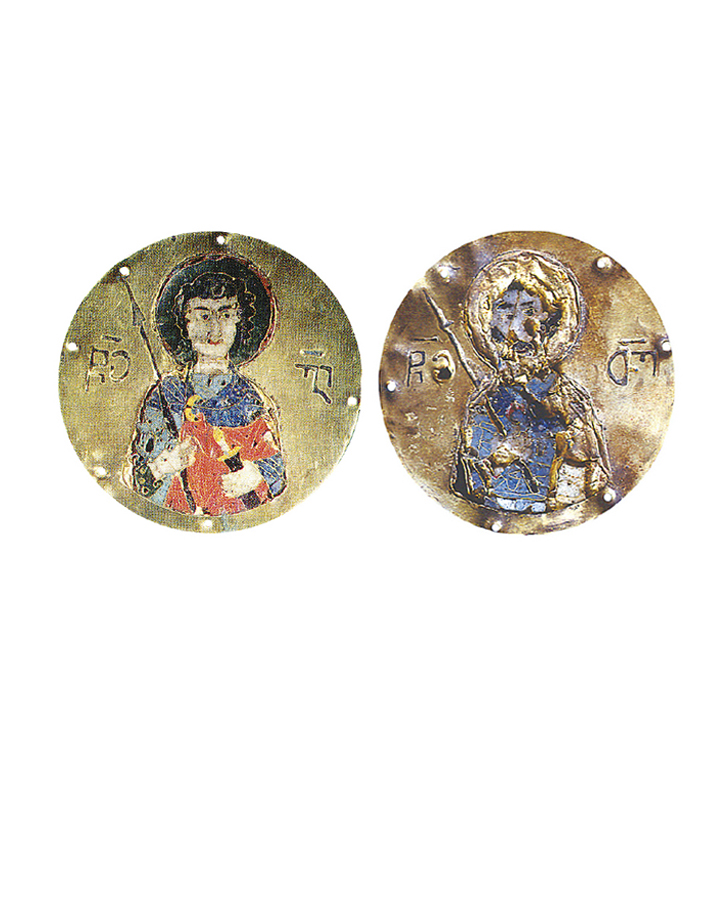
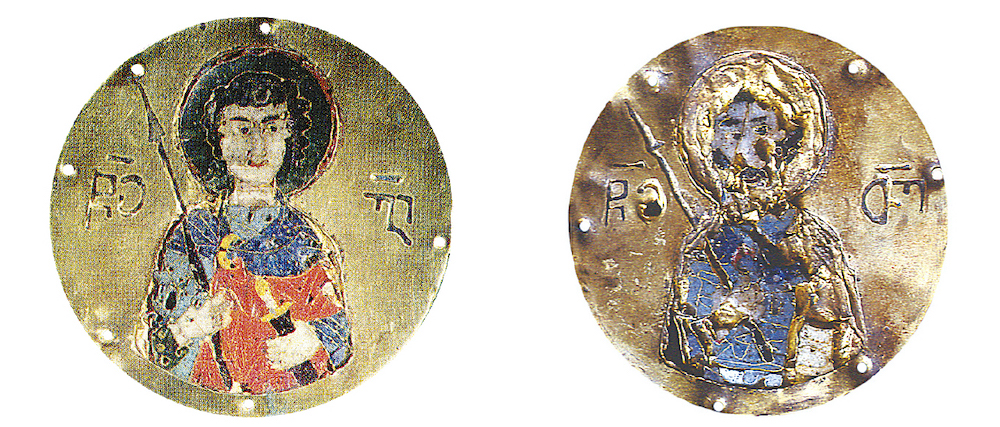
The ancient Georgian enamel medallions that adorned the icons of Jumati Monastery's Archangels are now housed in the Metropolitan Museum of New York, the Russian Museum in St. Petersburg, the Hermitage Collection, and the Cluny Museum in Paris. In the 1920s, some of them were returned to Georgia.
The history of Georgian antiquities that are kept in various museums around the world is fascinating. It is mostly connected with the period when Russia abolished the autocephaly of the Georgian Church. The stolen treasure was worth tens of millions of rubles. Among other items, the enamel medallions stolen from the Jumati Monastery icons have a particular aesthetic value.
Since the 15th century, Jumati Monastery, which is situated on a mountain in Ozurgeti (Guria region), served as an episcopal center. It is assumed that the monastery in this location was built even earlier, and was named after the Archangels Michael and Gabriel. Scientists claim that the preserved frescoes in the temple date back to the 16th–18th centuries. Jumati is also mentioned in the educational history of Georgia. As the story goes, Nikoloz, the monastery abbot, traveled to Klarjeti (in what is now the territory of modern Turkey) and returned with five ancient manuscripts, including the Adish Gospel, which was copied in 897 and is now housed in the Svaneti Historical Museum.
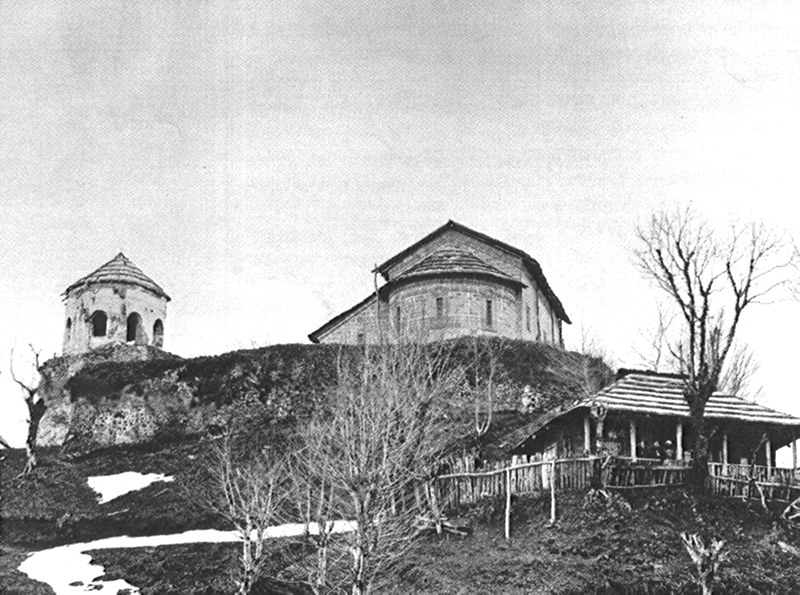
Old view of Jumati
Among the antiquities housed at Jumati, two enormous icons of the Archangels Michael and Gabriel adorned with enamel medallions were distinguished. Ten enamel medallions with Georgian inscriptions ornamented the image of the Archangel Michael, and twelve medallions with Greek inscriptions decorated the icon of the Archangel Gabriel. We can only judge the high artistic value of these icons from the surviving paintings.
Dimitri Bakradze, a Georgian historian, described Jumati monastery in 1873. At that time, the icons of the Archangels were still in the monastery. Years later, the famous Russian scientist Nikodim Kondakov became interested in the antiquities kept at Jumati. Bakradze accompanied Kondakov to Guria, but unfortunately the icons were not found in the monastery. "It appears that in the 1880s, both icons were stolen or melted, and the enamel medallions were sold to different Russian collections," Kondakov wrote in the expedition report that was later published as a book. The mission of the expedition was to investigate the issue of antiquities stolen from Georgia.
After the Imperial Court Minister presented a report to the Russian Emperor, the story became public. According to the report, the Governor-General of Kutaisi looted monasteries in Gelati and Svaneti and stole unique treasures from monasteries in Guria. The responsibility of describing the Georgian church relics fell upon Kondakov.
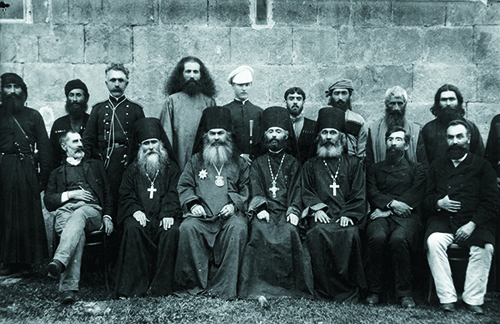
The photo was taken in 1889 during the expedition of Dimitri Bakradze and Nikodim Kondakov. Monastery of the Creator (Ozurgeti). Seated: first from left side Dimitri Bakradze, third Guria-Samegrelo Bishop Griogl Dadiani, sixth - Nikodim Kondakov
Although the identities of the looters were not revealed in Nikodime Kondakov's book, it was widely known that the Chief Prosecutor of the Russian Synod, the powerful Pobedonstsev, and the Exarch of Georgia were both involved in this case. They feared that the spread of this information would further damage Exarch Pavle Lebedev's already tarnished reputation in St. Petersburg. Exarch Pavle was well-known for his anti-Georgian sentiments. While a student, Ioseb Laghiashvili murdered Chudetski, the rector of Tbilisi Theological Seminary, and the Exarch insulted (cursed) the Georgian nation at his funeral. This prompted extreme public outrage. As a result, the case of stolen antiquities was hushed up, and a significant number of them were never returned to Georgia.
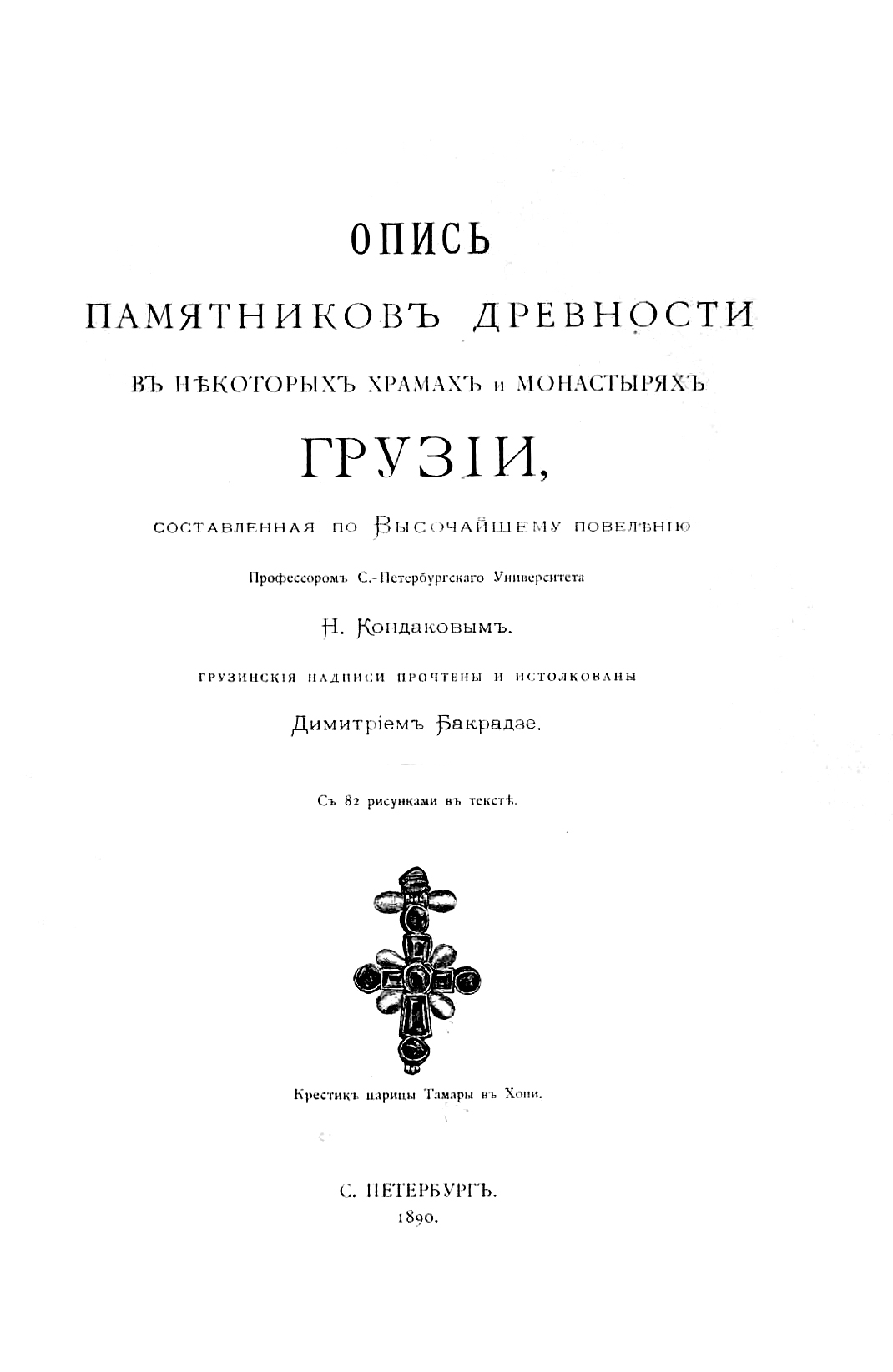
Nikodime Kondakov's book cover
Sabin-Gus, a photographer from Tbilisi, removed the antiquities from Jumati Monastery. The story began in this way: in 1881, a photographer who had a good relationship with the Exarch appealed to the Synod Office of Georgia-Imereti with a request to take religious valuables from the churches and monasteries of Western Georgia for "restoration" purposes. The photographer promised to restore the old, damaged frames. Sabin-Gus took Georgian and Byzantine enameled icons, crosses adorned with precious stones, and other valuables from Shekaret, Jumati, Martvili, Khobi and other monasteries, and nothing was ever returned.
Twelve enamel medallions with Greek inscriptions that featured images of Jesus Christ, the Mother of God, John the Baptist, Saint George, Saint Theodore, Saint Demetrius, Saint Peter, Saint Paul, Matthew the Evangelist, and Saint John the Theologian adorned the icon of the Archangel Gabriel. The medallion with the portrait of St. Mark is no longer visible on the icon in the surviving photo that was taken during Dimitri Bakradze's expedition. A medallion with the image of St. Luke was nailed to the chest of the Archangel.
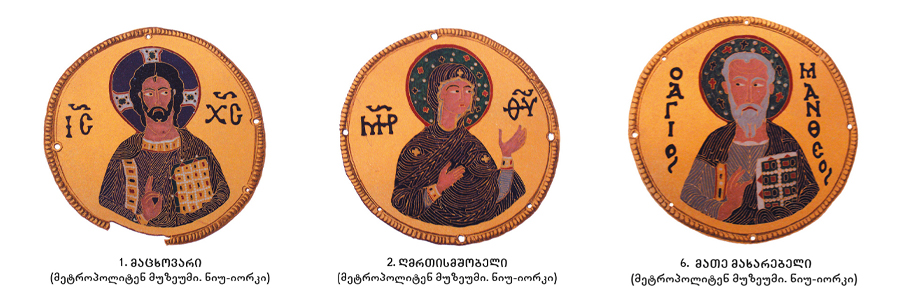
Jesus Christ, the Mother of God, Matthew the Evangelist
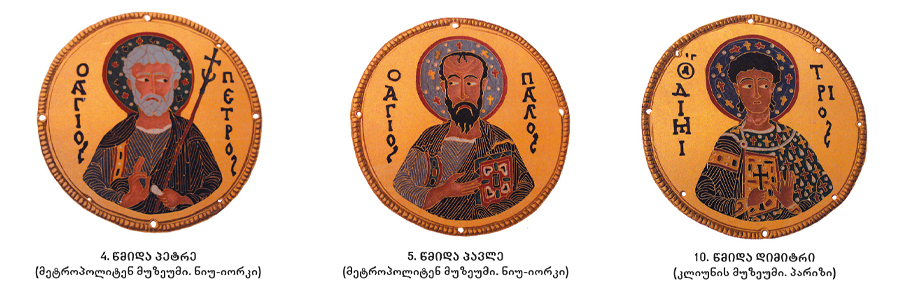
Saint Peter, Saint Paul, Saint Demetrius

John the Baptist, Saint John the Theologian, Saint George
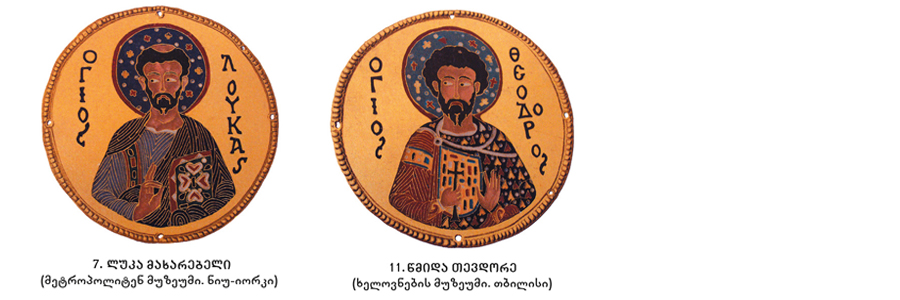
St. Luke, Saint Theodor
Sabin-Gus sold the enamel medallions to three Russian collectors – Botkin, Balashov, and Zvenigorodsky, and from the latter alone he received 30,000 gold rubles. Having learned about the report sent to the Emperor, the collector Zvenigorodsky tried to excuse himself before the Emperor by writing and explaining that he had obtained the enamel medallions for the Hermitage. He claimed that he had published a book of photos from his collection at the highest level of polygraphy in Europe, and which he had dedicated to Alexander III of Russia. After the Emperor passed away, Zvenigorodsky broke his promise and sold the collection to Pierpont Morgan instead of handing it over to the Hermitage.
In 1917, Morgan donated it to the Metropolitan Museum of New York, where nine medallions belonging to this icon are preserved to this day. The medallion with the image of St. Theodore belonging to the icon of the Archangel Gabriel is kept in the Gold Fund of the Tbilisi Art Museum. It turns out that Zvenigorodsky himself was robbed, and the medallion was sold to the Russian collector Botkin. In 1923, the Georgian art critic and founder of the Art Museum Shalva Amiranashvili returned Botkin's collection to Tbilisi. This was the period when the Soviet government issued a law and returned to the Soviet republics museum collections that had been seized by the tsarist government. Shalva Amiranashvili, who was well familiar with the issue of antiquities taken from Georgia, was particularly interested in Mikhail Botkin’s collection, since it contained rare pieces of Georgian enamel. After being refused by the Russian State Treasury, the scientist happened to meet Stalin in the Kremlin, and it was at his request that the case was resolved positively. This is how the enamel icon of the Mother of God, the treasure of Jumati and Shemokmedi that had been stolen from Gelati, was returned to Georgia.
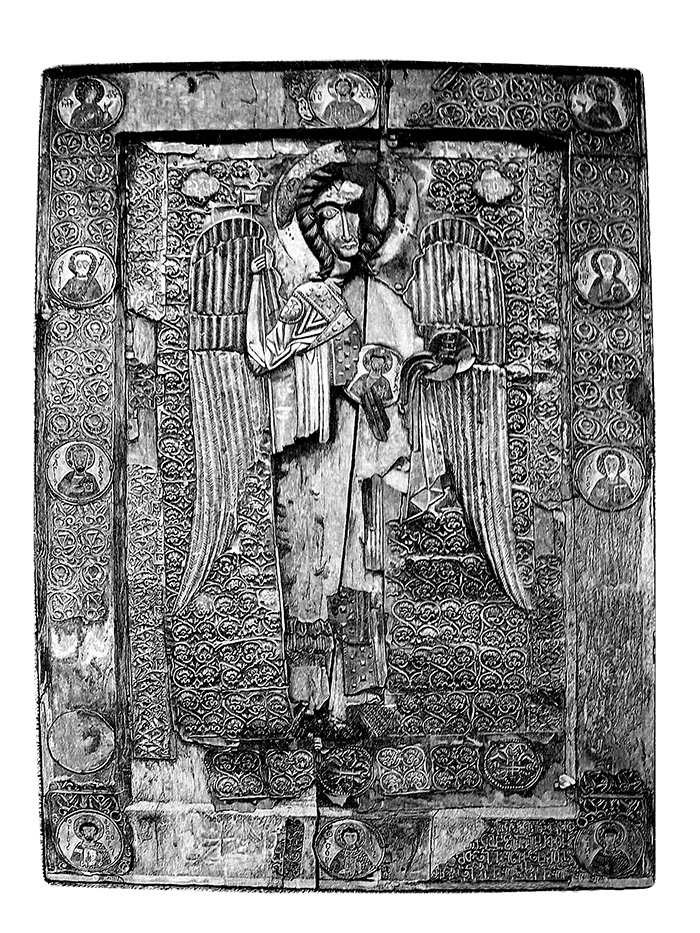
Icon of Archangel Gabriel

Icon of Archangel Michael
The medallion with the image of St. Demetrius found its way into the Louvre Museum in Paris, and afterwards it appeared in the Cluny Museum. To this day St. Markozi's medallion has not been found. According to experts, the icon was created between the end of the 11th and the beginning of the 12th centuries, out of ten medallions with Georgian inscriptions that adorned the second icon of the Archangel Michael from Jumati monastery, Sabin-Gus affixed six to new silver plaques (the Virgin Mary, St. John the Baptist, St. Peter, St. Paul, and St. Mark). It is assumed that he returned the medallions to Guria in order to circumvent the indignation of the Georgian clergy. These medallions are now lost.
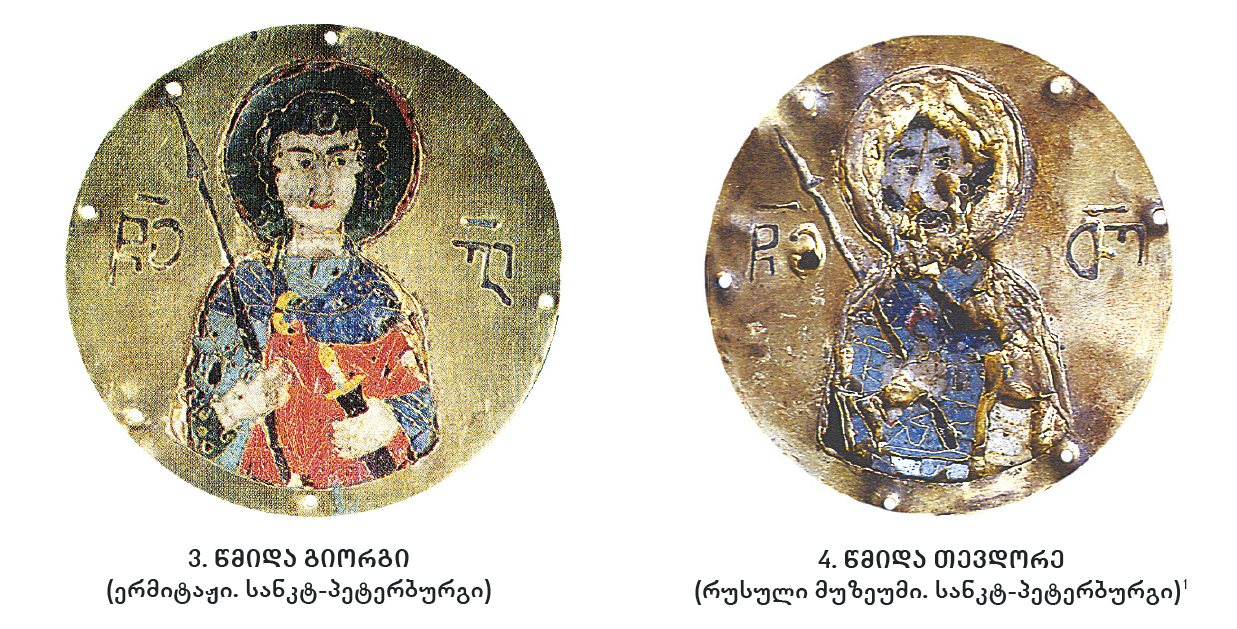
St. George (Hermitage, St. Petersburg), St. Theodore (Russian Museum, St. Petersburg)
In 1915, St. George’s medallion belonging to the icon of Archangel Michael from the Bobrinsky collection ended up at the museum of the Baron Stieglitz Institute in St. Petersburg, and since 1924 it has been kept in the Hermitage. Medallions with images of the Savior and St. Demetrius were returned to Georgia in 1923, along with other antiquities from the Botkin collection, and are currently displayed at the Art Museum of Georgia. The 10th medallion with the image of St. Theodore is the property of the Russian Museum in St. Petersburg.
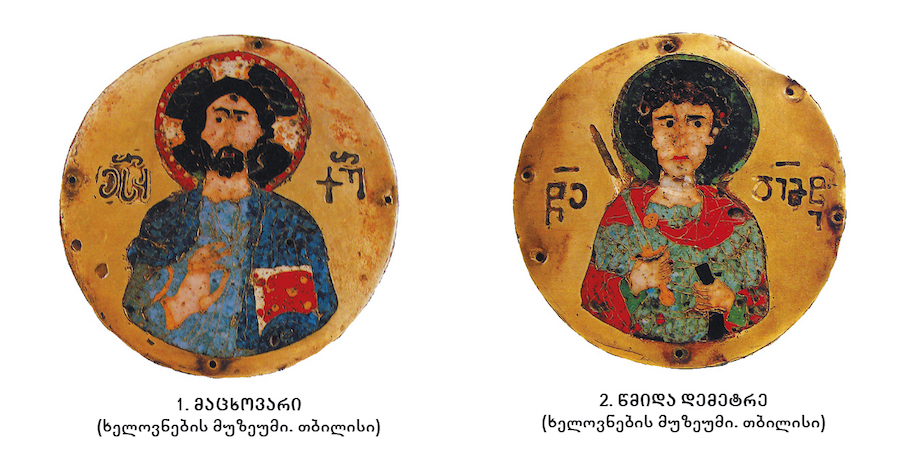
Savior (Art Museum, Tbilisi), St. Demetrius
Fortunately, the enamel medallions survived among many antiquities whose fate is unknown, and no one is sure that they will ever be seen again. "Imagine, if so many things have been lost from one monastery, what valuables science may now lack, considering that all the monasteries of Georgia are in such a condition!" The great scientist Niko Mari wrote worriedly from St. Petersburg to the newspaper "Iveria" after hearing the report of Nikodim Kondakov's expedition, and still not knowing what had happened to the artworks of global significance — the enamel medallions of Jumati Monastery.